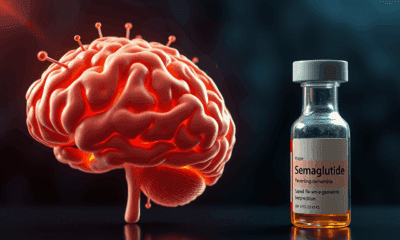While we try to keep things accurate, this content is part of an ongoing experiment and may not always be reliable.
Please double-check important details — we’re not responsible for how the information is used.
Controlled Substances
Potential Biomarkers for Schizophrenia Identified in Cannabis Users
A new study has analyzed and compared the fatty acids in the blood of individuals with schizophrenia, of those with cannabis use disorder and of those with both diagnoses, with the aim of shedding light on new biomarkers and improving the understanding of the biological relationship between the two disorders. The study also offers a powerful tool for identifying new biomarkers.

Addiction
Cannabis Use Among Seniors Surges 46% in Two Years—Study Reveals
Cannabis use among older Americans has climbed dramatically, with 7% of adults 65 and older now reporting recent use. This rise isn’t just in numbers but also in diversity older users today are more likely to be women, college-educated, and higher-income. Researchers suggest legalization and growing social acceptance are contributing factors, especially in states with medical marijuana laws. The trend is especially notable among those with chronic illnesses, raising both opportunities and concerns for medical professionals trying to balance symptom relief with the complexities of aging.
Biology
The Dark Side of Marijuana Use: A New Study Reveals Cardiovascular Risks
A new study finds that chronic cannabis use — whether it’s smoked or consumed in edible form — is associated with significant cardiovascular risks.
Agriculture and Food
The Dark Side of Cannabis Use in Pregnancy
A systematic evidence review finds that consuming cannabis while pregnant appears to increase the odds of preterm birth, low birth weight and infant death.
-

 Detectors2 months ago
Detectors2 months agoA New Horizon for Vision: How Gold Nanoparticles May Restore People’s Sight
-

 Earth & Climate4 months ago
Earth & Climate4 months agoRetiring Abroad Can Be Lonely Business
-

 Cancer3 months ago
Cancer3 months agoRevolutionizing Quantum Communication: Direct Connections Between Multiple Processors
-

 Agriculture and Food3 months ago
Agriculture and Food3 months ago“A Sustainable Solution: Researchers Create Hybrid Cheese with 25% Pea Protein”
-

 Diseases and Conditions4 months ago
Diseases and Conditions4 months agoReducing Falls Among Elderly Women with Polypharmacy through Exercise Intervention
-

 Chemistry3 months ago
Chemistry3 months ago“Unveiling Hidden Patterns: A New Twist on Interference Phenomena”
-

 Earth & Climate3 months ago
Earth & Climate3 months agoHousehold Electricity Three Times More Expensive Than Upcoming ‘Eco-Friendly’ Aviation E-Fuels, Study Reveals
-

 Albert Einstein4 months ago
Albert Einstein4 months agoHarnessing Water Waves: A Breakthrough in Controlling Floating Objects





























